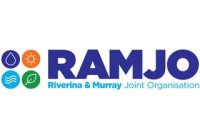Employment (total) is the most accurate and up to date measure of the total number of people employed in the Riverina and Murray Region. The statistics are modelled by NIEIR to correct for the known undercount of jobs recorded in the Census. They estimate the total number of persons employed in an industry sector (full-time and part-time) in the Riverina and Murray Region regardless of where they live. They are updated annually.
By comparing the number of jobs in each industry sector to a regional benchmark, you can clearly see the structure of the Riverina and Murray Region's economy. This can be done by directly comparing the area to its benchmark, or by using a location quotient to look at the relative size of industries.
Estimated total employment by industry should not be considered as a "Full-Time Equivalent" measure as different industries will have different ratios of part-time and full time employees. Full-time employment by industry statistics are also available.
To see how employment is distributed across the area, see the Employment locations section and to see where people come from to work in these industries, these data should be viewed in conjunction with Workers place of residence by industry data.
More granular sub-categories for each industry sector are available in the Employment by industry (Census) counts. While Census figures undercount employment they do provide a more detailed picture of the specific industries operating in the area.
Data source
National Economics (NIEIR) - Modelled series
Current area:
Current benchmark:
Comparison year:
| Employment (total) by industry | |||||||||
|---|---|---|---|---|---|---|---|---|---|
| Riverina and Murray Region | 2022/23 | 2008/09 | Change | ||||||
| Industry | Number | % | Regional NSW | Number | % | Regional NSW | 2008/09 - 2022/23 | ||
| Agriculture, Forestry and Fishing | 8,374 | 10.2 | 4.8 | 8,798 | 12.9 | 6.9 | -424 | ||
| Mining | 97 | 0.1 | 2.4 | 84 | 0.1 | 2.2 | +13 | ||
| Manufacturing | 8,015 | 9.7 | 5.9 | 8,274 | 12.1 | 8.7 | -259 | ||
| Electricity, Gas, Water and Waste Services | 1,081 | 1.3 | 1.4 | 1,062 | 1.6 | 1.5 | +19 | ||
| Construction | 9,693 | 11.8 | 12.4 | 5,826 | 8.5 | 9.2 | +3,867 | ||
| Wholesale Trade | 1,797 | 2.2 | 1.9 | 2,410 | 3.5 | 2.9 | -612 | ||
| Retail Trade | 8,012 | 9.7 | 9.8 | 7,980 | 11.7 | 12.1 | +32 | ||
| Accommodation and Food Services | 6,264 | 7.6 | 8.4 | 5,854 | 8.6 | 8.2 | +410 | ||
| Transport, Postal and Warehousing | 3,509 | 4.3 | 3.8 | 3,018 | 4.4 | 4.3 | +491 | ||
| Information Media and Telecommunications | 556 | 0.7 | 0.7 | 634 | 0.9 | 1.1 | -78 | ||
| Financial and Insurance Services | 1,088 | 1.3 | 1.8 | 1,200 | 1.8 | 2.1 | -111 | ||
| Rental, Hiring and Real Estate Services | 740 | 0.9 | 1.3 | 761 | 1.1 | 1.5 | -21 | ||
| Professional, Scientific and Technical Services | 2,901 | 3.5 | 4.6 | 2,332 | 3.4 | 4.2 | +569 | ||
| Administrative and Support Services | 2,378 | 2.9 | 3.2 | 1,481 | 2.2 | 2.7 | +897 | ||
| Public Administration and Safety | 4,655 | 5.7 | 6.1 | 4,103 | 6.0 | 6.3 | +552 | ||
| Education and Training | 6,517 | 7.9 | 8.8 | 4,740 | 6.9 | 8.5 | +1,777 | ||
| Health Care and Social Assistance | 12,409 | 15.1 | 17.1 | 6,712 | 9.8 | 12.1 | +5,697 | ||
| Arts and Recreation Services | 1,093 | 1.3 | 1.4 | 713 | 1.0 | 1.3 | +380 | ||
| Other Services | 3,135 | 3.8 | 4.2 | 2,441 | 3.6 | 4.0 | +693 | ||
| Total industries | 82,314 | 100.0 | 100.0 | 68,423 | 100.0 | 100.0 | +13,891 | ||
Source: National Institute of Economic and Industry Research (NIEIR) ©2023. Compiled and presented in economy.id by .id (informed decisions). NIEIR-ID data are adjusted each year, using updated employment estimates. Each release may change previous years’ figures. Learn more Please refer to specific data notes for more information | |||||||||


Dominant groups
An analysis of the jobs held by the local workers in the Riverina and Murray Region in 2022/23 shows the three largest industries were:
- Health Care and Social Assistance (12,409 people or 15.1%)
- Construction (9,693 people or 11.8%)
- Agriculture, Forestry and Fishing (8,374 people or 10.2%)
In combination these three industries accounted for 30,476 people in total or 37.0% of the local workers.
In comparison, Regional NSW employed 17.1% in Health Care and Social Assistance; 12.4% in Construction and 4.8% in Agriculture, Forestry and Fishing.
The major differences between the jobs held by local workers of the Riverina and Murray Region and Regional NSW were:
- A larger percentage of local workers employed in the field of Agriculture, Forestry and Fishing (10.2% compared to 4.8%)
- A larger percentage of local workers employed in the field of Manufacturing (9.7% compared to 5.9%)
- A smaller percentage of local workers employed in the field of Mining (0.1% compared to 2.4%)
- A smaller percentage of local workers employed in the field of Health Care and Social Assistance (15.1% compared to 17.1%)
Emerging groups
The number of local workers in the Riverina and Murray Region increased by 13,891 between 2008/09 and 2022/23.
- Health Care and Social Assistance (+5,697 local workers)
- Construction (+3,867 local workers)
- Education and Training (+1,777 local workers)
- Administrative and Support Services (+897 local workers)
